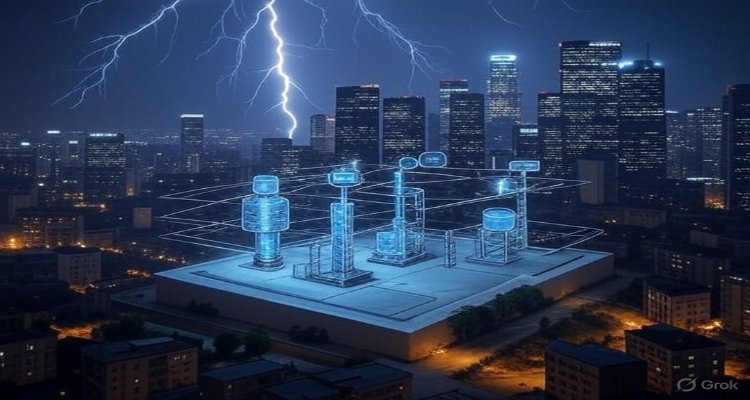The Race to Harness Lightning as a Renewable Resource
Scientists worldwide are exploring ways to harness lightning as a renewable resource—could one of nature’s most destructive forces also become our cleanest power source?
Introduction: A Spark of Possibility
Imagine a single bolt of lightning—powerful enough to light a city for days—being captured, stored, and turned into clean electricity. For centuries, lightning has inspired awe, fear, and fascination. Today, it is becoming the subject of intense scientific research, as innovators around the world race to explore whether this raw energy can be harnessed as a renewable resource.
Context & Background
Nature produces around 1.4 billion lightning flashes each year, according to the World Meteorological Organization, each carrying up to 1 billion volts of electricity. Traditionally, this energy has been seen as untamable—a destructive force resulting in wildfires, blackouts, and thousands of fatalities annually.
However, with global demand for renewable energy surging, scientists have begun revisiting the once far-fetched idea: can lightning be harvested like solar or wind power? The potential payoff is enormous. A single strike releases more than five times the energy of a massive solar panel system operating for several days. If captured efficiently, lightning could supplement—or even rival—today’s most reliable renewable resources.
Main Developments in Lightning Energy Research
Over the last decade, experimental projects have emerged across the globe, testing ways to capture and redirect lightning energy:
-
Specialized Conductors and Towers: Research institutes in the U.S. and Europe are experimenting with ultra-strong conductors placed on tall towers to attract lightning strikes. These structures are linked to high-capacity batteries or superconductors designed to handle massive surges of current.
-
Plasma Channels in the Atmosphere: Laser-guided plasma channels are being developed to “steer” lightning, making it more predictable and easier to capture. A breakthrough study in 2022 demonstrated proof-of-concept by diverting strikes toward safe conductor rods.
-
Next-Generation Energy Storage: Traditional batteries cannot withstand the explosive delivery of lightning. Engineers are now researching graphene-based supercapacitors and advanced cryogenic storage systems that can absorb, regulate, and store this instantaneous energy.
-
Simulation Labs: Because naturally occurring strikes are unpredictable, some research facilities use artificially created lightning in controlled labs to test how storage devices react under extreme voltage loads.
These developments demonstrate that while lightning energy capture is technically possible, consistent and scalable application remains a massive challenge.
Expert Insight and Public Reaction
Energy researchers remain cautiously optimistic.
“Lightning is the most extreme form of renewable energy we know—unpredictable yet extraordinarily powerful,” says Dr. Anika Verma, a renewable-energy scientist at the University of Delhi. “Harnessing it is less about whether we can, but whether we should focus resources on making it feasible.”
Public interest in lightning capture often spikes after viral videos of mega-strikes surface on social media, generating both excitement and skepticism. While some dream of lightning-powered homes, others warn about safety risks and the enormous costs of infrastructure.
Economists also weigh in: the cost of building lightning capture facilities could vastly exceed solar or wind solutions in the near term. Yet, supporters counter that such investments may future-proof humanity against worsening climate challenges.
Impact & Implications
If lightning energy became viable, the implications would be global and transformative:
-
Energy Security: Countries with frequent lightning activity—such as parts of Africa, Southeast Asia, and the American Midwest—could reduce dependence on fossil fuels.
-
Climate Action: Harnessing lightning could become another tool in the fight against climate change by cutting carbon emissions.
-
Technological Leap: Success in lightning storage research could accelerate advancements in supercapacitors, superconductors, and atmospheric physics that spill over into other industries.
-
Infrastructure & Safety: Large-scale lightning farms could simultaneously reduce wildfire risks by controlling natural strikes and directing them safely into energy capture systems.
For now, solar and wind remain the champions of the renewable revolution, but lightning represents a potential “wild card” in the portfolio of future energy sources.
Conclusion: From Myth to Science
For centuries, lightning has symbolized divine power and uncontrollable chaos. Today, researchers are daring to transform that myth into scientific reality. The race to harness lightning as a renewable resource is still in its early stages—fraught with technical, financial, and safety challenges. Yet, the pursuit itself pushes humanity to expand the boundaries of what renewable energy can be.
As one researcher put it: “Harnessing lightning isn’t just about clean energy. It’s about learning to work with nature’s rawest forces.” Whether lightning ultimately joins solar, wind, and hydro in the renewable mix remains uncertain—but the spark of possibility has already been lit.
Disclaimer :This article is for informational purposes only. Research into lightning energy is ongoing, and current results remain experimental. No commercial-scale system for harnessing lightning energy currently exists.











